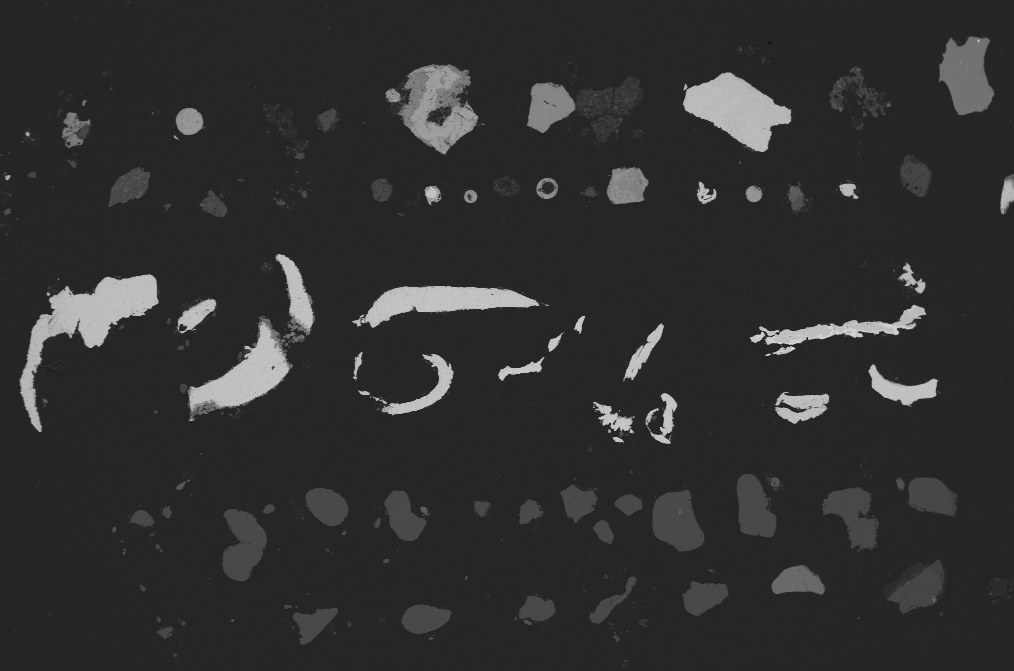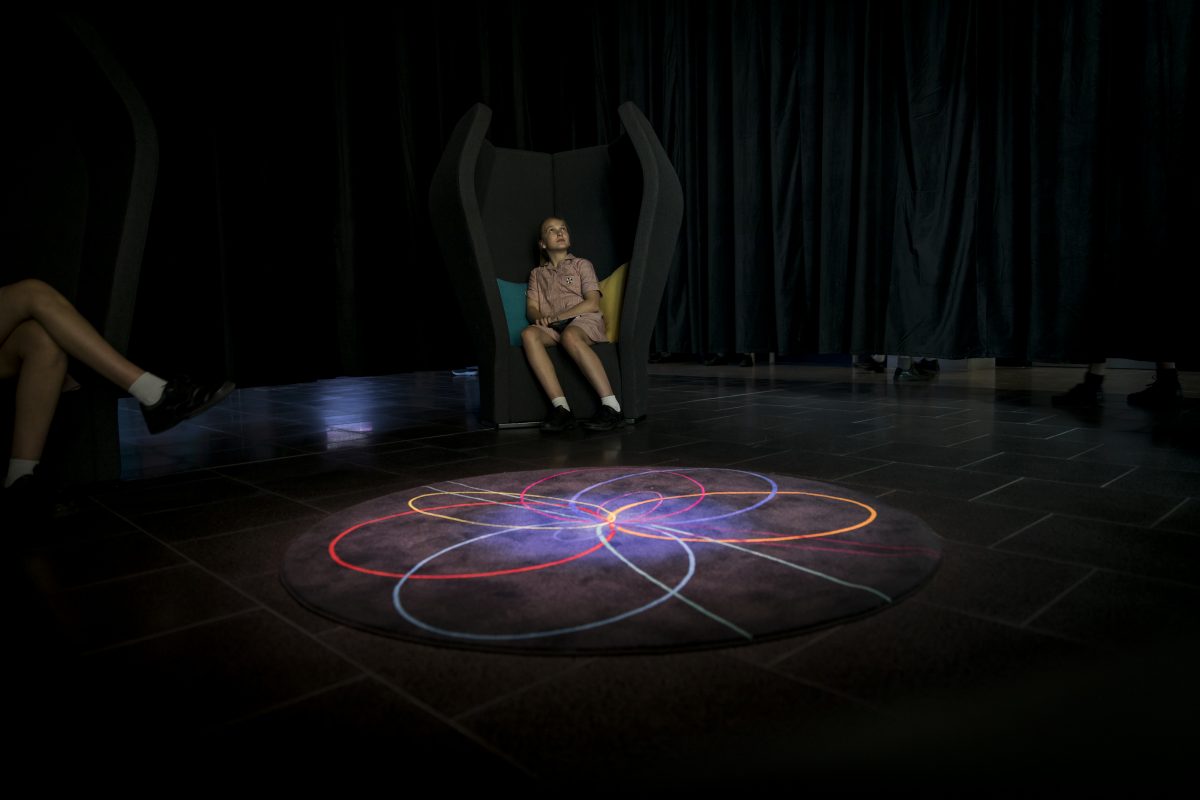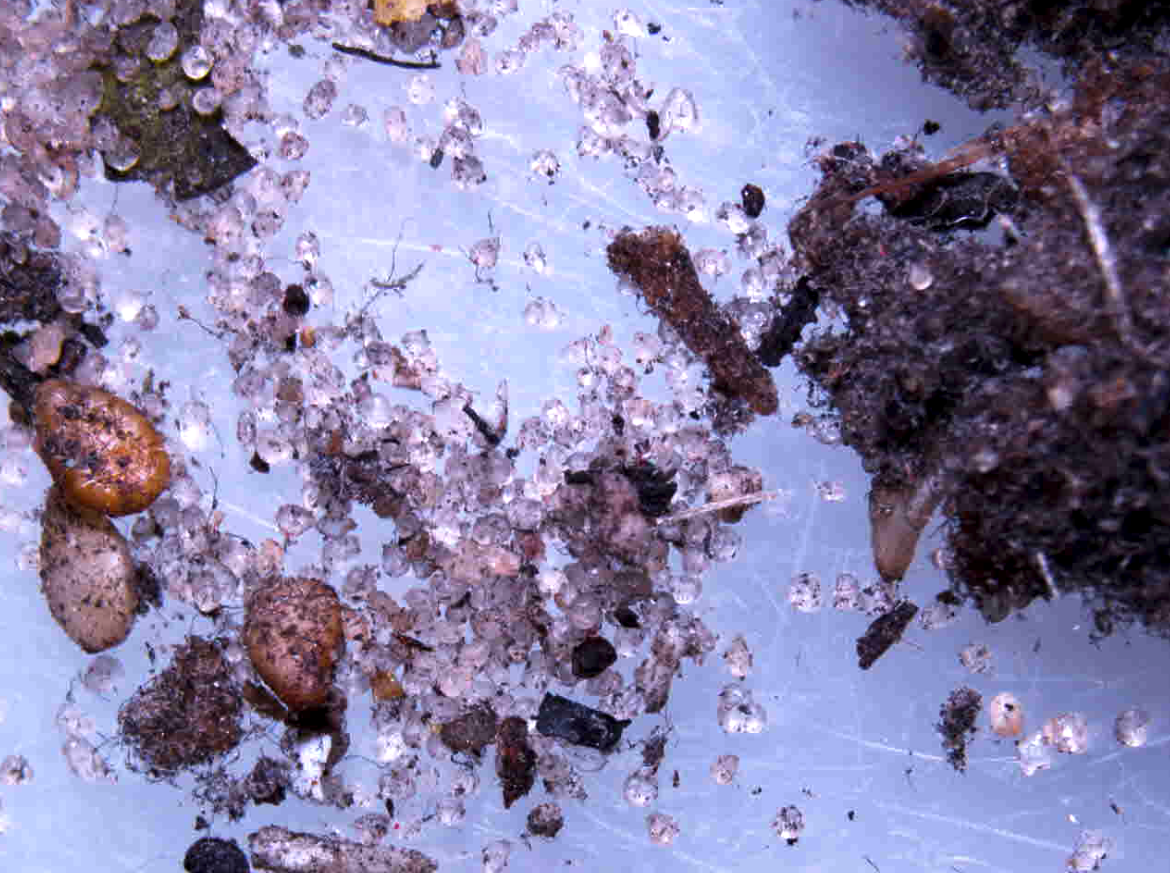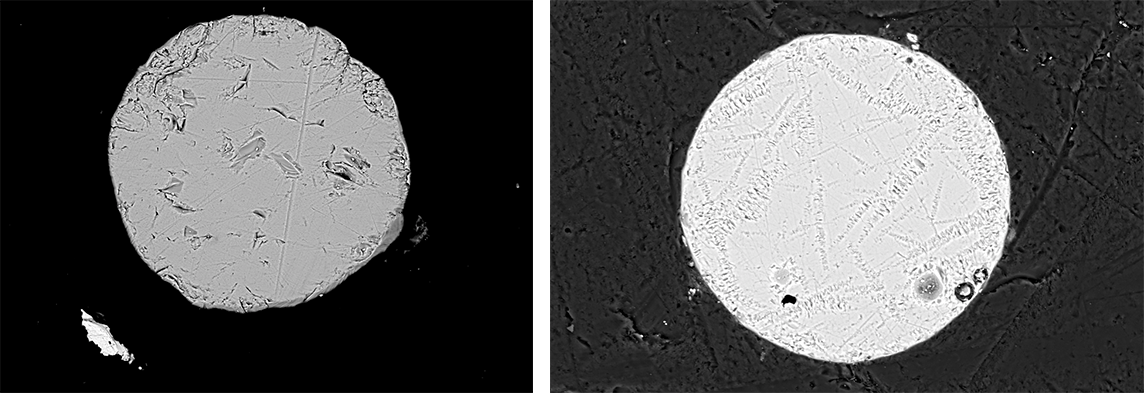Posted 21 Feb

Are there particles of non-terrestrial origin in our Cosmic Living Room?
Two thirds of the dust in your house comes from outside, tracked in from your feet or as airborne particles. Dust is always along for the ride, dropping off or being picked up, it follows you everywhere you go, through the mundane as often as the meaningful. It is a collection of these moments, a mix of places and people and time. If you cannot escape your dust footprint, it follows that similarly an alien would be unable to prevent sprinkling a trail of space dust behind them.
The Cosmic Living Room is a welcome space for aliens and humans to meet. It was designed as a communal area by Jonathon Keats and Dr Alice Gorman to ensure the space facilitated interaction with the extra-terrestrial. During your visit you can explore the concept of universal forms of communication.

The circular rug in the centre of the room represents the concept of congregation. Coloured orbital paths on the rug symbolise the converging of aliens to a common centre point. From the 27th of November 2018 the rug has been sitting in the Cosmic Living Room, collecting dust as inanimate objects tend to do.
Now, we have been a little mischievous. Over time we have been secretly vacuuming the rug, collecting dust samples to be sent off to the University of South Australia’s Future Industries Institute (FII) to be analysed. Our fingers have been crossed that we can catch some extra-terrestrials in the act of visiting.
How would we know that it is dust of an alien origin? Well, 40,000 tonnes of extra-terrestrial material arrive on Earth every year in the form of dust. 90% of this material is vaporised as it enters the atmosphere. The other 10% – imagine meteorites but super micro – are the particles that make it to the Earth’s surface. We call this cosmic dust or cosmic spherules.
Micrometeorites include materials derived from both asteroids and comets. Upon entry to the Earth’s atmosphere the particles undergo melting, leading to their spherical shape. Amongst other indicators, the occurrence of Iron-Nickel metal and sulphides is also strong evidence of extra-terrestrial origin. The presence of Iron-Nickel metal is rare among terrestrial dust.
Here at MOD. we do a lot of unexpected things. Lately, this has involved filling zip-lock bags with rug dust. Last week we visited FII to analyse the dust samples to determine if there was any cosmic dust present in our Cosmic Living Room.
First, the dust needed to be separated into organic, magnetic and non-magnetic material. The magnetic and non-magnetic particles are mounted on to epoxy discs, then polished in preparation for Scanning Electron Microscopy (SEM).

The SEM process creates an image of the particle by scanning the surface of the sample with a focused beam of electrons. The topography and composition of the sample can be determined from this process.
The organic material (all the gross stuff) is too delicate for the SEM process. This was looked at under an optical microscope. Whilst a bit yuck if you know what it is (some sesame seeds, hair, dead skin, and cracker crumbs) we have to say that upon a closer look our visitors have traipsed in an interesting collection of bits and pieces.

So, what did the SEM show our dust samples were composed of?
Quartz, quartz, and more quartz – essentially a lot of sand. Some remnants of building materials and some glass particles. Some Iron, Nickel and Magnetite.
But, was there anything that indicated that some extra-terrestrials have made use of the welcoming space MOD. has provided?

Our colleagues at Future Industries were very interested in the magnetic particles they could draw out. In particular, the presence of pure Iron-Nickel metal in our samples. It was odd that these materials were so distinctly separated and pure instead of mixed in with other elements, or even mixed together. If you remember what we said earlier, this is one of the trademarks of extra-terrestrial dust… Cue the X-Files theme.
There was also an unusual amount of round magnetic magnetite. The spherule shape of these particles is similar to that of cosmic dust, which previously has been found to be the same spherule shape.


We found a high number of spherules in the magnetic particles. These were made from mostly iron, oxygen, and some with aluminium thrown in the mix. It is suspected these were artificial from the texture, but we can’t be sure. Unfortunately, that while they look a lot like cosmic dust, they do still lack of some essential cosmic dust elements, such as Olivine. However, the fact that we found so many perfectly sphere particles, measuring 100-200μm, or 0.1-0.2mm, is strange as well.
From the dust sample analysis, it looks like our extra-terrestrial friends have not left any dust behind in our welcoming space. Whilst it is very good of them to leave the place spotless, we were hoping to find a hint of their visit to our meeting place. Despite this, there were several strange finds that maybe could hint to something… You win this time, aliens.
Answering That Age-old Lament: Where Does All This Dust Come From? by American Chemical Society
Alien bugs may have been transported to Earth, scientists say by Andrew Griffin